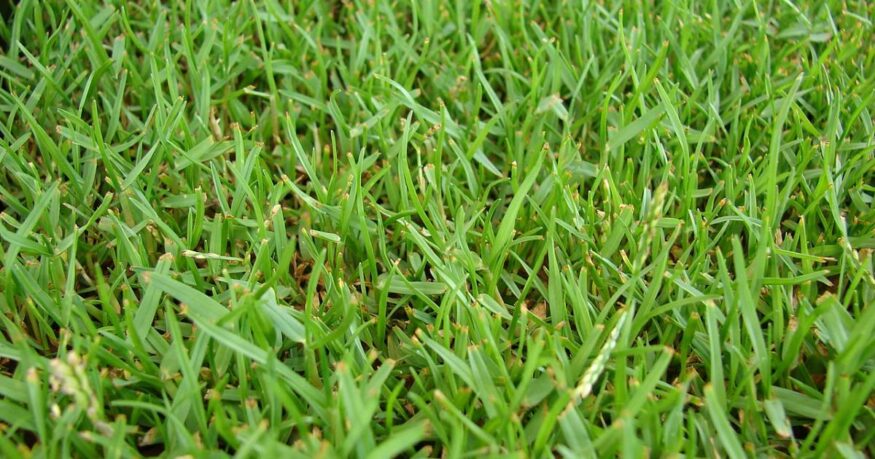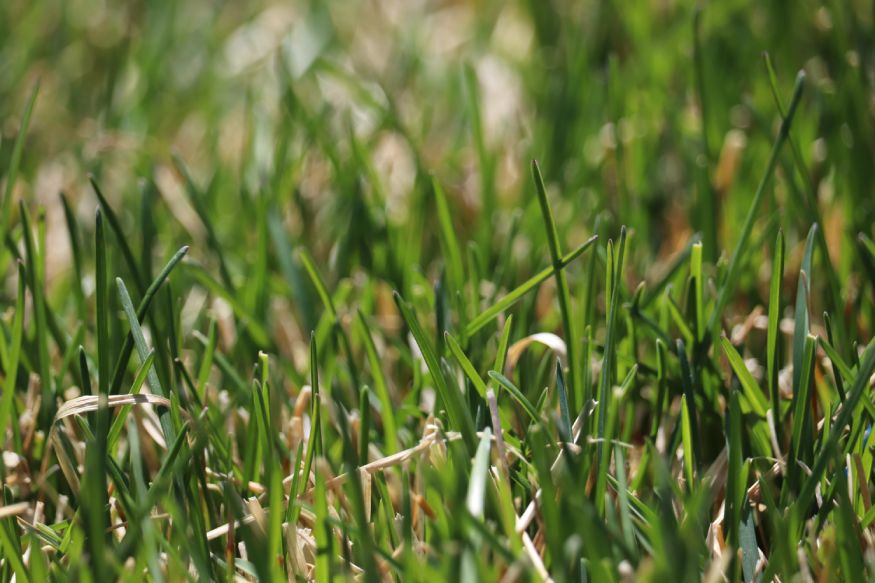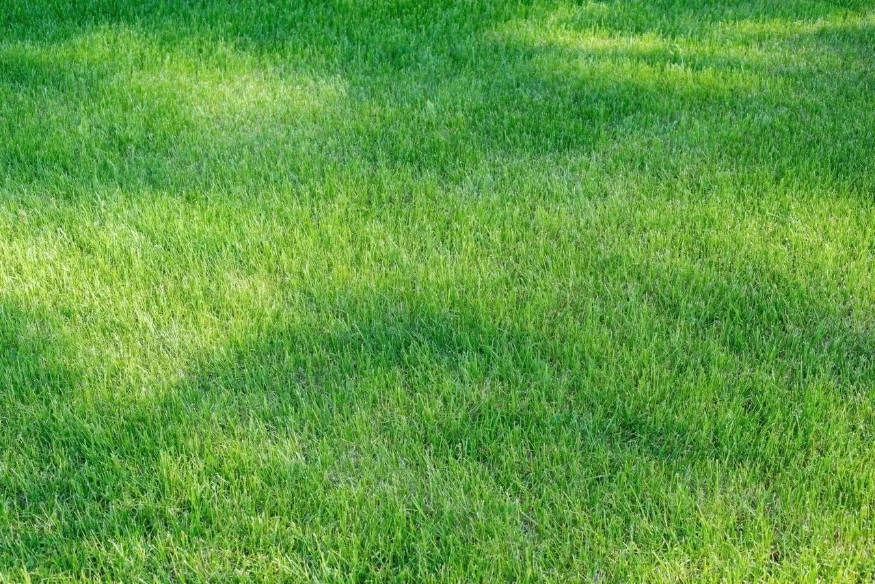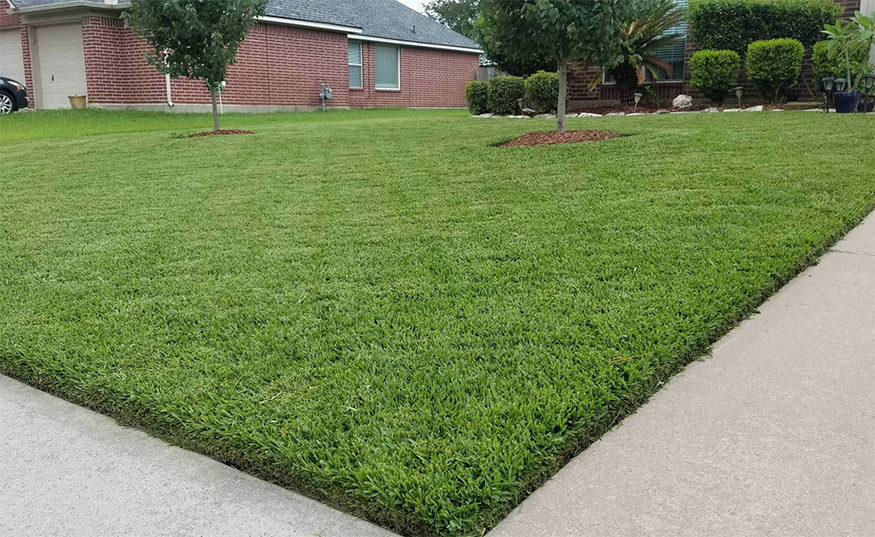Are you tired of dealing with patchy, dry grass in your Texas lawn? Look no further than Zoysia Grass – a tough and drought-resistant option that thrives in the Lone Star State. But is it the best grass for Texas?
While Zoysia is a great choice, there are other options to consider as well. Read on to discover which types of grass will keep your lawn looking lush and healthy year-round.
Zoysia Grass

| Also Known As | Zoysiagrass; Zoysia sp. |
| Type of Grass | Warm season perennial |
| Optimal Zones | Southern through warmer transition zones |
| Root Structure | Shallow to medium |
| Winter hardiness | Good |
| Heat tolerance | Excellent |
| Shade tolerance | Partial |
| Water Requirements | Medium |
| Drought Tolerance | Good |
| Self Repair Capacity | Low |
| Overall Maintenance Requirements | Moderate |
Why Zoysia Grass Is A Good Choice For Texas
Homeowners in Texas know the importance of having a lawn that can withstand the state’s unique weather conditions. Enter Zoysia grass, a top-performing option that boasts an unbeatable look and feel. While it may come with a slightly higher price tag than Bermuda or St. Augustine grass, Zoysia can grow in various soil types and weather conditions, making it a versatile choice for Texans.
One of the many reasons why Zoysia is so popular in arid regions of Texas is its exceptional drought tolerance and weed resistance, as well as moderate shade tolerance. With varieties like Zeon Zoysia and Palisade Zoysia to choose from, homeowners can enjoy a lush barefoot feel and full green appearance throughout the year.
One major advantage of this slow-growing grass type is its dense growth pattern, which naturally repels weeds and reduces the need for frequent mowing. And despite being hardy enough to handle heavy foot traffic during hot, dry spells, it’s important to note that Zoysia requires intensive watering right after planting to ensure healthy establishment.
In summary, if you’re looking for a low-maintenance yet stunning option for your Texas lawn that’s resistant to weeds and drought-tolerant, consider giving one of the many varieties of Zoysia grass a try. You won’t be disappointed by its performance or aesthetic appeal!

Get an organic lawn care plan designed just for your yard.
Use the code EHG20 to save $20!
Buffalograss

| Also Known As | Buffalograss; Buchloe dactyloides |
| Type of Grass | Warm season perennial |
| Optimal Zones | Northern, transition, and southern zones |
| Root Structure | Very deep |
| Winter hardiness | Great |
| Heat tolerance | Great |
| Shade tolerance | Poor |
| Water Requirements | Low |
| Drought Tolerance | Excellent |
| Self Repair Capacity | Moderate to high |
| Overall Maintenance Requirements | Low after establishment |
Why Bufallograss is a Good Choice For Texas
For Texas homeowners dealing with arid climates, Buffalograss can be a game-changing option.
With a maximum annual rainfall threshold of 25 inches, this grass performs best in dry regions and struggles with weed invasion in wetter areas. Overwatering can also encourage unwanted intruders, so it’s important to strike the right balance.
While Buffalograss is generally low maintenance, it does require full daily sun exposure to thrive and maintain its appearance. But for those living in hotter parts of Texas, this resilient grass type is up to the challenge – handling even the driest spells with ease.
Indeed, Buffalograss is known for its exceptional drought tolerance and adaptability to various soil types. It’s no wonder why many Texans turn to this hardy variety when looking for an attractive yet low-maintenance lawn solution. And while it may not tolerate shade well, its ability to withstand high temperatures makes it an ideal choice for many homeowners across the state.
Related Article: The Best Grass for North Texas
Centipedegrass

| Also Known As | Eremochloa ophiuroides |
| Type of Grass | Warm season perennial |
| Optimal Zones | Zones 8-9 |
| Root Structure | Shallow, Fibrous roots |
| Winter hardiness | Moderately Hardy |
| Shade tolerance | Moderate |
| Water Requirements | Low to Moderate |
| Drought Tolerance | High |
| Self Repair Capacity | Good |
Why Centipedegrass is a good choice for Texas Lawns
Eastern Texas residents seeking a low-maintenance grass option that can handle partial shade need look no further than Centipedegrass.
Boasting medium to coarse texture, this variety is well-suited to hot climates and doesn’t require much in the way of nutrients. However, it does have relatively shallow roots that are sensitive to alkaline soil and cannot handle heavy foot traffic or prolonged drought.
But for those who can provide the right growing conditions, Centipedegrass can be a lush and weed-free addition to any lawn. Despite its sensitivity to cold weather, this slow-growing species can withstand years of winter weather when grown in warmer regions of Texas.
Also known as Eremochloa ophiuroides, Centipedegrass is a top choice for homeowners across the state thanks to its adaptability to various climates – from Atlanta to Athens – and ability to thrive in shady areas. And with minimal maintenance requirements, it’s no wonder why so many Texans turn to this grass type for attractive yet low-effort lawns.
St. Augustine Grass

| Also Known As | St. Augustinegrass; Stenotaphrum secundatum |
| Type of Grass | Warm season perennial |
| Optimal Zones | Southern coastal |
| Root Structure | Shallow |
| Winter hardiness | Very poor |
| Heat tolerance | Excellent |
| Shade tolerance | Good |
| Water Requirements | Moderate |
| Drought Tolerance | Moderate to High |
| Self Repair Capacity | Moderate |
| Overall Maintenance Requirements | Moderate to High |
Why St. Augustine Grass Is a Good Choice For Texas
If your Texas property is surrounded by mature trees, St. Augustine grass could be the perfect solution for you. This grass type thrives in fully shaded areas, making it an ideal choice for homeowners struggling to maintain a lawn in low-light conditions. And with its stunning appearance and elegant texture, St. Augustine grass can add a touch of sophistication to any outdoor space.
Don’t let its preference for shade fool you – St. Augustine grass can also handle various weather conditions with ease. And unlike other grass varieties that quickly go dormant in arid climates, this hardy species maintains its deep-green hue even in drought conditions.
While St. Augustine grass may have a more coarse texture than some other options, that characteristic actually works to its advantage by camouflaging weeds and minor turf issues.
But before planting this variety on your property, keep in mind that soil pH needs to stay within a specific range of 5.0 to 8.5 for optimal growth and maintenance requirements include annual dethatching.

Get an organic lawn care plan designed just for your yard.
Use the code EHG20 to save $20!
Texas’ Climate And Growing Challenges
Texas is known for its hot and often unpredictable climate, which can pose significant challenges for lawn care.
Weather Considerations
Summers in Texas are notoriously long and scorching, with temperatures frequently rising above 100°F. This heat can quickly dry out lawns, making it difficult to keep grass healthy and green.
In addition to high temperatures, Texas also experiences periods of drought that can last for weeks or even months at a time. These dry conditions make it essential to choose grass varieties that are drought-tolerant and require less water.
Soil Quality
When it comes to maintaining a lush and healthy lawn in Texas, soil quality is a crucial factor to consider. Unfortunately, many areas in Texas have alkaline soil with low nutrient content, which can make it challenging to grow certain types of grass. However, with the right knowledge and preparation, you can still achieve a beautiful lawn that thrives in these conditions.
One of the most important things to keep in mind is choosing the right grass variety for your specific soil type. Some grasses are better suited for alkaline soils than others, so it’s essential to do your research before planting. Bermuda grass and zoysia grass are two popular options that tend to do well in Texas’ alkaline soil. These varieties have deep root systems that allow them to access nutrients and water more effectively.
Another key factor in maintaining healthy soil is proper fertilization. Since many areas of Texas have low nutrient content, adding fertilizer can help replenish the necessary nutrients for your lawn to thrive. However, it’s important not to over-fertilize as this can lead to other issues such as excessive growth or even damage to the roots.
In addition to choosing the right grass variety and fertilizing appropriately, there are other steps you can take to improve your soil quality. Aeration is one technique that involves poking small holes throughout your lawn’s surface to allow air, water, and nutrients to penetrate deeper into the ground. This process helps break up compacted soil and encourages root growth.
Overall, Texas’s climate and growing conditions may present some unique challenges for lawn care. But with the right knowledge and selection of appropriate grass types, Texans can still enjoy beautiful lawns throughout the year.

Get an organic lawn care plan designed just for your yard.
Use the code EHG20 to save $20!
I live in Granbury, TX. Our summers are hot and the temperature can rise up to 115%. I would like to know which is the best grass to plant. As of now we have a mixture of St. Augustine and Bermuda grass, as well as lots of weeds. We are west of Fort Worth. What would be the best kind of grass to plant in our backyard?
I bought a Tx x Ky bluegrass hybrid from Outside Pride to mix into our existing lawn. (What we have now grows in shade, burns in sun.??) Found it on Amazon. There were dozens of websites offering TX bluegrass hybrids for sale from nurseries. I’m hoping this helps our scorched backyard! (I live in Lubbock, TX.)